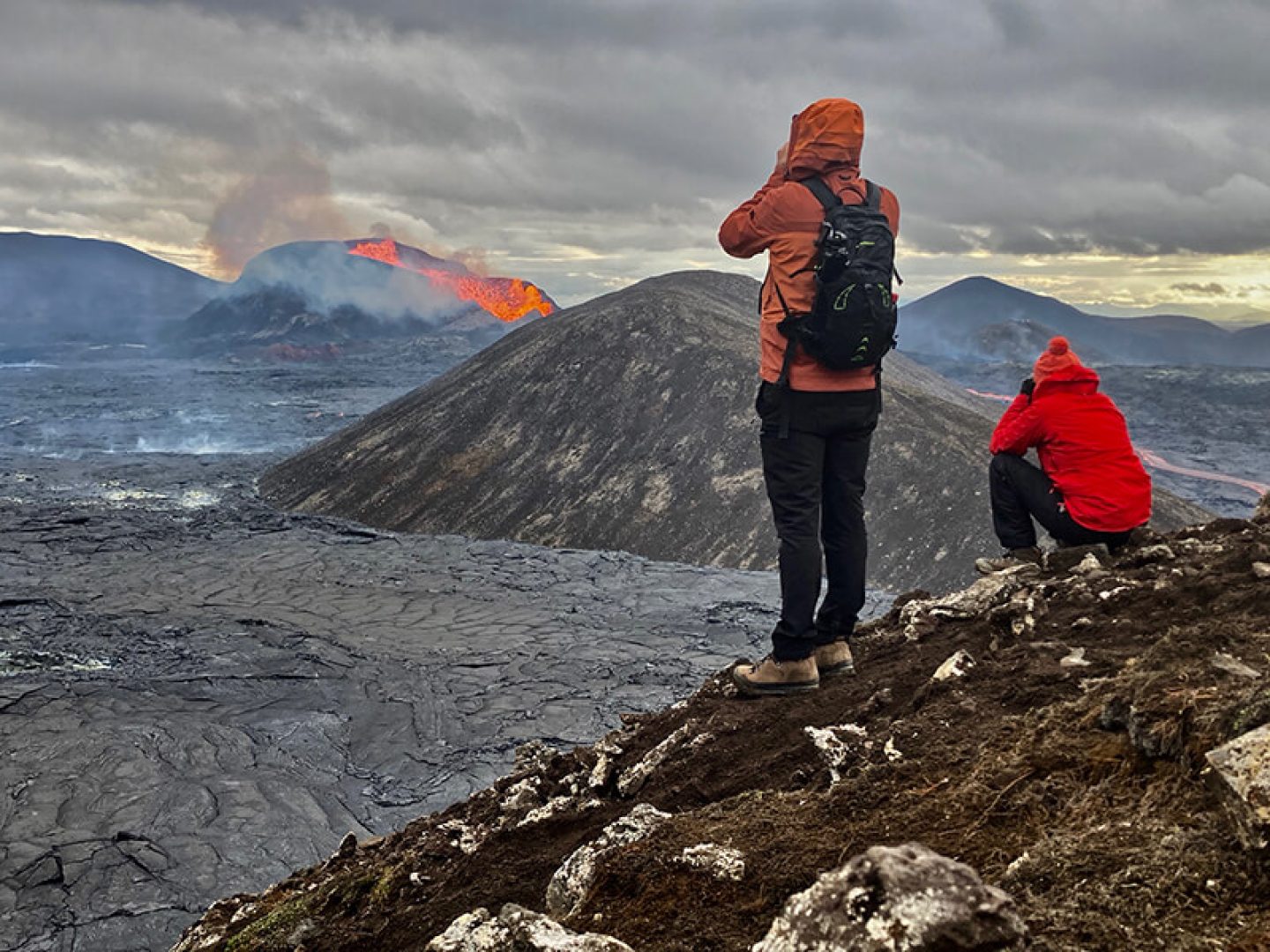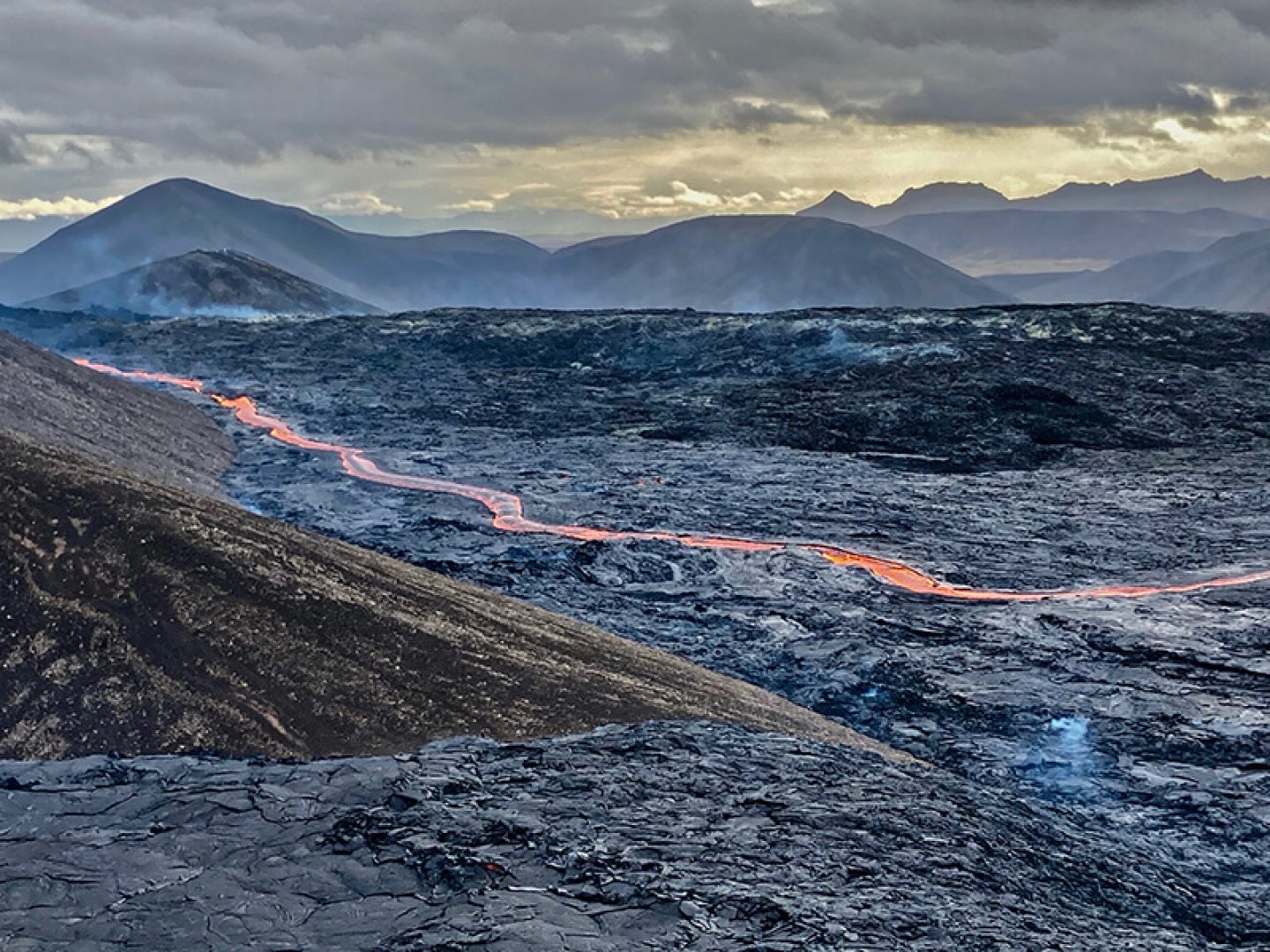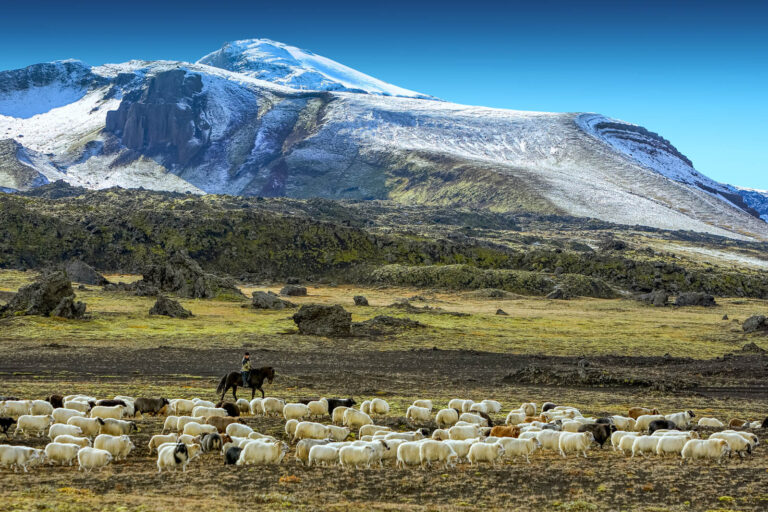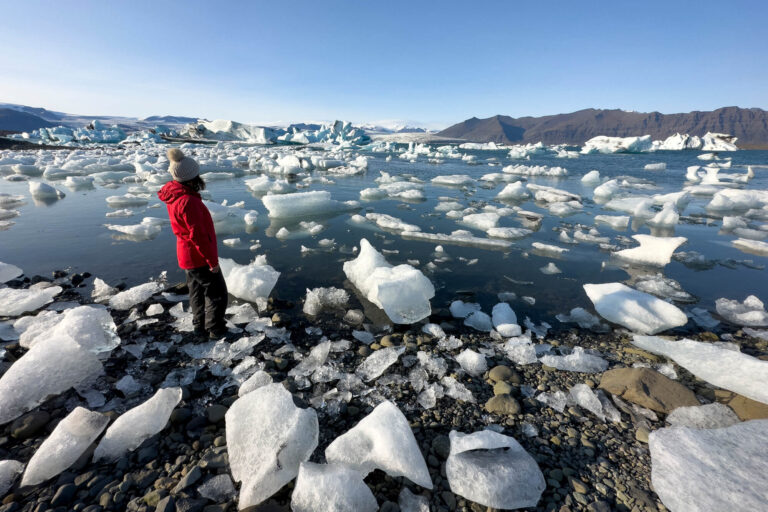
Discover the World guide, Cathy Harlow, provides her account of visiting Iceland’s ongoing volcanic eruption at Fagradalsfjall on the Reykjanes Peninsula. The eruption began in March 2021 and is one of the most accessible and ‘tourist-friendly’ the country has ever seen.
“It is utterly mesmerising. It is the most incredible sight I have ever witnessed.”
It’s 10.30 in the evening with just a hint of twilight. I’m walking up a broad trail to an erupting volcano and my excitement is off the scale. I’ve waited 35 years for this. Arriving at the viewpoint over the eruption site, a bed of crackling lava is bleeding fiery orange veins and fills the valley. Beyond, a crater is visible. Its pulsating magma heart glows red and at intervals it rises, pumping wildly, and spews fountains of lava into the air and streaming down its flanks. It is utterly mesmerising. It is the most incredible sight I have ever witnessed.
On 5th June, Cathy travelled to Fagradalsfjall, the site of Iceland’s latest volcanic eruption, a visit made possible by the island’s inclusion on the UK’s ‘green’ travel list. Just an hour’s drive from the capital and 30 minutes from Keflavik Airport, this most spectacular of natural wonders couldn’t be more conveniently located, though the locals may rightly disagree! Thankfully, so far, the eruption has caused no harm. From the parking area, a broad footpath leads gently uphill to several viewpoints over the eruption site, taking about an hour, as things stand currently.

You’d think that seeing an eruption in a place as volcanically active as Iceland would be easy. After all, there are around 30 different volcanic systems that between them produce an eruption every three to five years. Yet the truth is that many eruptions last only a week or so, occur in winter and in remote and inaccessible areas. The Fagradalsfjall eruption began on 19th March 2021 and no one knows how long it will last: maybe weeks or months but possibly years, as it is showing signs of what experts believe may form a shield volcano. I cannot say more emphatically that this is a unique opportunity to witness a ‘friendly’ volcano, accessible and totally amazing!
But how safe is it? The Icelandic Mountain Rescue teams are on site to monitor developments, give advice and if necessary, restrict access to the site temporarily.






 Instagram
Instagram
 Facebook
Facebook
 YouTube
YouTube